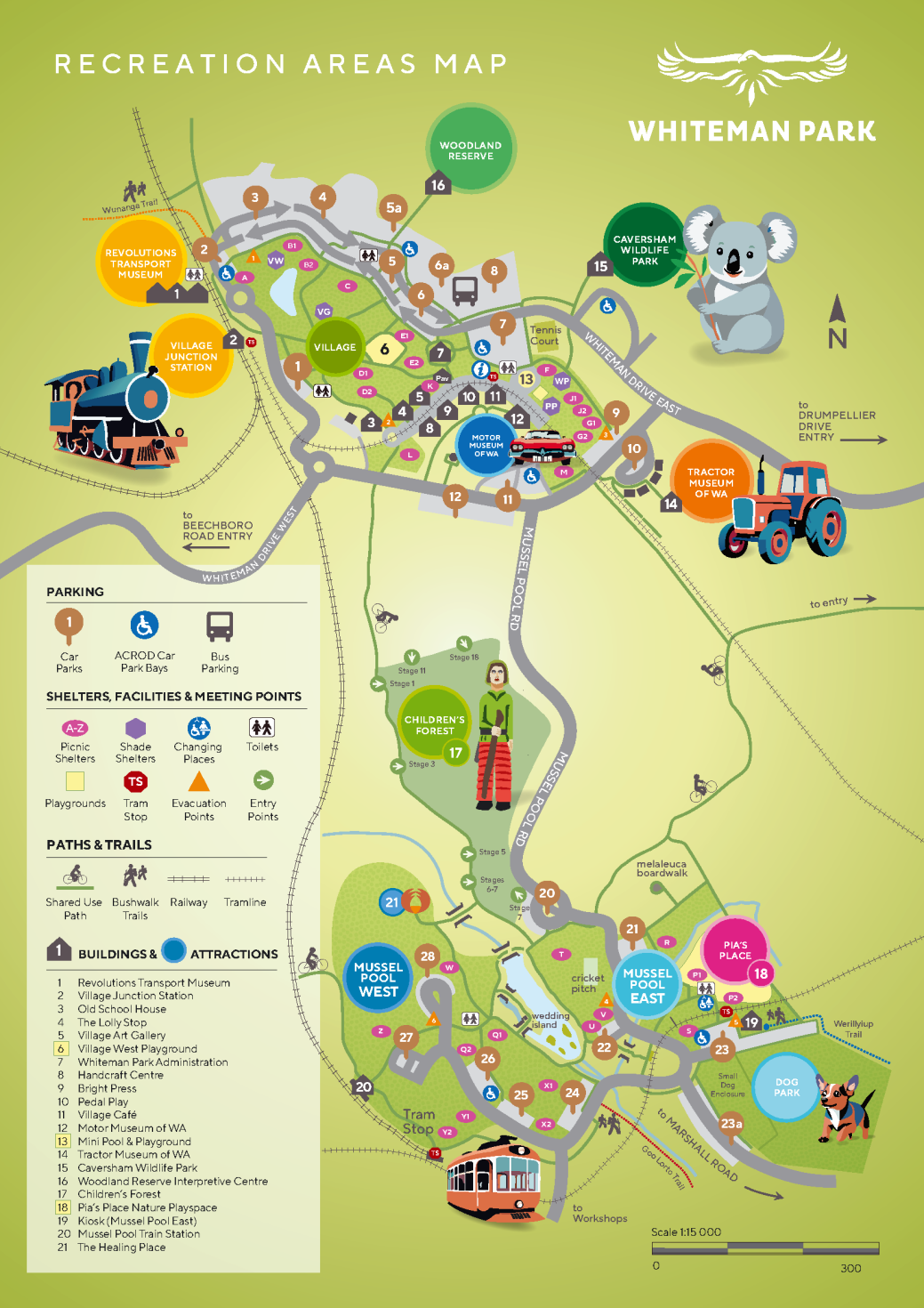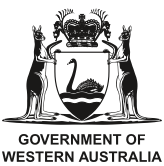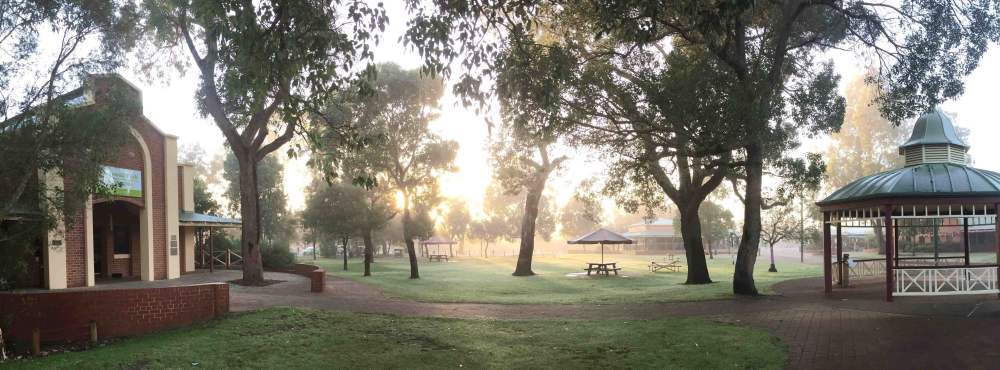You can visit Whiteman Park any day of the year, and there will always be something interesting for you to see and do.
January is one of the hottest months of the year at Whiteman Park and with winds generally from the east it is easily the driest. It is also one of the clearest months, with blue skies the norm, making the Park a very popular destination for the school holidays. Bring the kids swimming gear so that they can cool off in the children’s wading pool.
Although summer is a period of high fire danger in the surrounding bushland, the Park’s electric barbecues may still be used within the reticulated picnic areas.
January Averages
| Maximum temperature | 31.6C |
| Minimum temperature | 16.9C |
| Rainfall | 9.0mm |
February is also hot and dry but it has strong sea breezes; in fact, January and February are the windiest months of the year in Perth. The sea breeze, known as “the Fremantle Doctor,” is always welcome during this early part of the year as it rapidly cools down the coastal plain, creating the balmy conditions that make summer evenings so pleasant.
High fire danger is still an issue in February, but again, the Park’s electric barbecues may still be used within the reticulated picnic areas.
February Averages
| Maximum temperature | 31.8C |
| Minimum temperature | 17.4C |
| Rainfall | 15.2mm |
During March, the weather is warm and relatively dry; although the occasional hot day may still occur. This is generally a period of very pleasant weather when almost any activity, especially picnics may be enjoyed outdoors, so it is a great time to visit the Park.
Check out the What’s On section to see what great events are on this month.
March Averages
| Maximum temperature | 29.6C |
| Minimum temperature | 15.9C |
| Rainfall | 15.9mm |
While overnight temperatures may be down to the “one blanket on the bed” region, daytime temperatures are warm enough to be outdoors enjoying the bush trails and cycle paths in Whiteman Park as well as the annual Autumn Alpaca Show and school holiday activities for the kids.
April Averages
| Maximum temperature | 25.4C |
| Minimum temperature | 12.9C |
| Rainfall | 42.2mm |
While it is a little cooler than the preceding months May is not yet a time to put the second blanket on the bed – throw it on the lawn instead when you picnic at Mussel Pool.
If you are worried about potential rain, which is increasing at this time of the year, pre-book a picnic shelter and be rain proof while still enjoying the parklands. Watch as the woodlands begin to turn green when the rains arrive.
May Averages
| Maximum temperature | 21.7C |
| Minimum temperature | 10.5C |
| Rainfall | 101.7mm |
June marks the start of Perth’s peak rainfalls and the Park is usually beginning to look quite green and lush at this time – perfect to enjoy a ride on a steam train or an electric tram. There are usually frequent periods of bright sunny days that will inspire you to get out and visit the Park. Why not take a stroll down the Village Mall and browse the Village shops.
June Averages
| Maximum temperature | 18.9C |
| Minimum temperature | 9.0C |
| Rainfall | 165.0mm |
The weather pattern in July is usually characterised by a succession of short-lived cold fronts bringing blustery winds and soaking rains, but punctuated by lovely clear weather, perfect for an alfresco meal at the Whiteman Park Cafe.
Jump aboard a real steam locomotive to see the Park’s bush at its most lush, being sure to check out the watercourses and wetlands as their water levels rise.
July Averages
| Maximum temperature | 18.9C |
| Minimum temperature | 9.0C |
| Rainfall | 165.0mm |
Daytime temperatures start to increase from August onwards and the Park is by now very lush, with lakes and ponds filling and streams flowing. Warmer days mean picnic weather so watch the forecasts and pack the hamper.
While Christmas is still months away, think about booking a picnic shelter now for your work party or family Christmas in the Park, as December is our busiest time of the year.
August Averages
| Maximum temperature | 18.4C |
| Minimum temperature | 8.0C |
| Rainfall | 117.8mm |
“Spring is sprung, the grass has ris’, I wonder where da boidies is!” Look out for the blooming of countless wildflowers in the Park, such as the bright Cowslip Orchid and the sprays of Swan River Myrtle. Take a walk along the Wununga Bush Trail or one of the northern walk/cycle paths and see how many you can identify.
There may still be a few rainy days but sunshine is beginning to replace the clouds of the previous few months.
September is also the last chance to take a ride on a steam train before summer sets in again. Come along to the Friends of Ashley Day to get your fill of these wonderful locomotives and charming carriages.
September Averages
| Maximum temperature | 20.1C |
| Minimum temperature | 8.9C |
| Rainfall | 71.6mm |
South-westerly sea breezes are building in the afternoon, giving a taste of the summer to come, but spring is still in full bloom and even some of the summer species are beginning to bud – an invitation to get out and smell the perfume!
Our Mini Water Playground opens again this month, so bring the kids out to enjoy the first splash of spring on those warmer October days.
October Averages
| Maximum temperature | 22.5C |
| Minimum temperature | 10.2C |
| Rainfall | 45.4mm |
School students are gearing up for end of year exams but the rest of us can get out into the park to enjoy the bush and parklands in beautiful warm clear weather.
Look out for the fiery eruption of golden yellow as the aptly named ‘Christmas Tree’ begins to bloom in time for that special day next month.
November Averages
| Maximum temperature | 25.7C |
| Minimum temperature | 12.6C |
| Rainfall | 26.0mm |
December is the official start of Summer, but there’s still plenty of lovely warm days left over from Spring’s temperate weather. This is the busiest time of the year for picnickers and with the festive season upon us, it is time to use that shelter booking that you made earlier in the year to catch up with friends, colleagues and family.
Around Christmas time, possibly the world’s largest biomass Nuytsia floribunda, a member of the Mistletoe family, comes into bloom with masses of brilliant orange/yellow flowers. This native is popularly known as the ‘Christmas Tree’. Whiteman Park contains hundreds of these trees and when they are in flower, the display is spectacular.
This is also the time for the popular Marri and Banksia trees to start flowering, creating some vivid images between all these flowering masses.
December Averages
| Maximum temperature | 28.8C |
| Minimum temperature | 14.8C |
| Rainfall | 10.5mm |
NOTE: All statistics have been sourced from the Bureau of Meteorology website www.bom.gov.au, with thanks.



